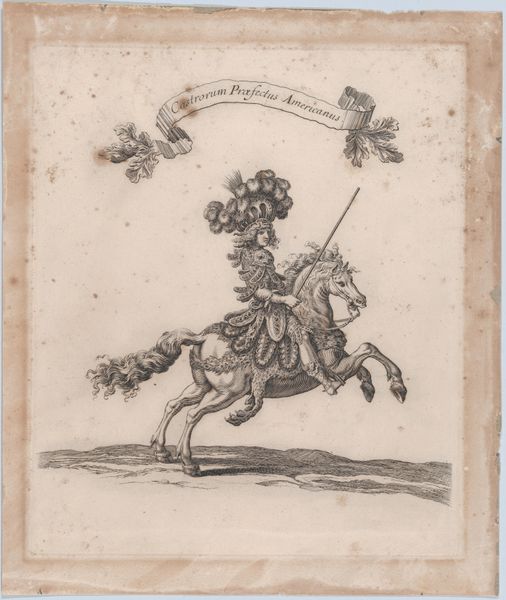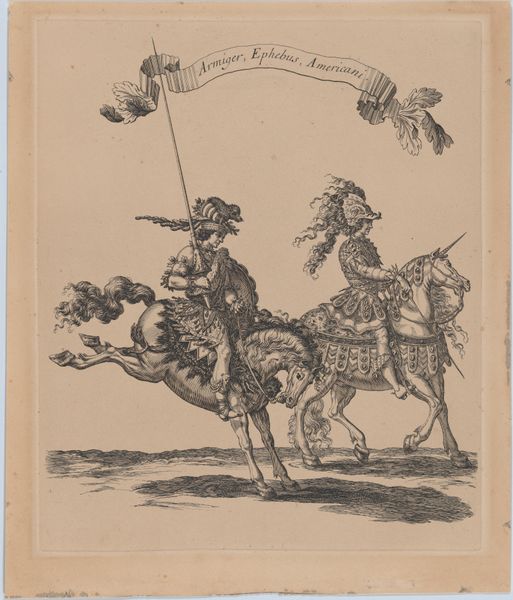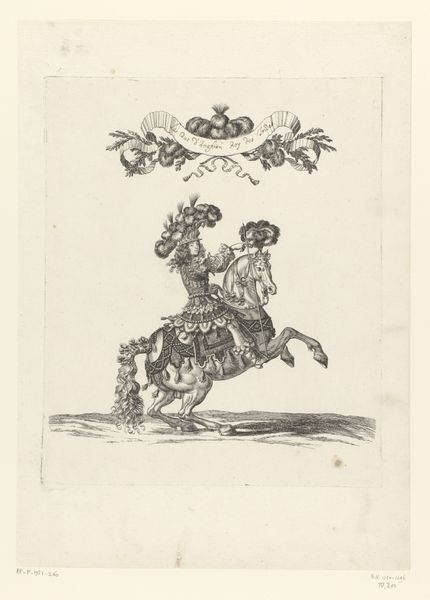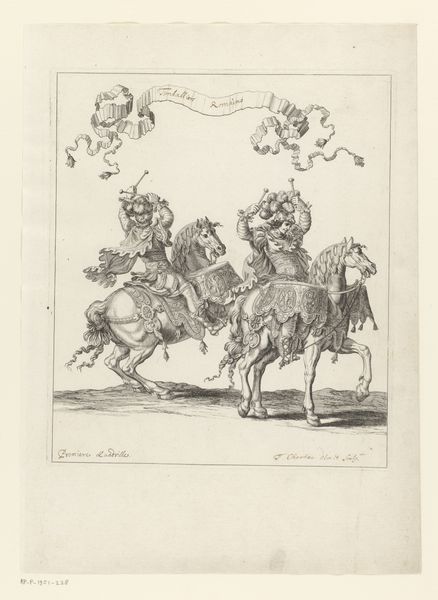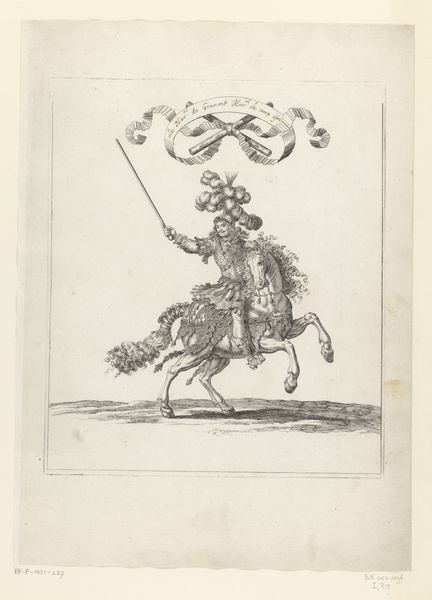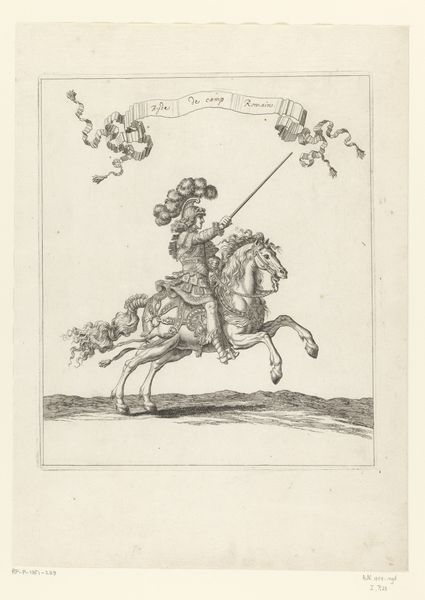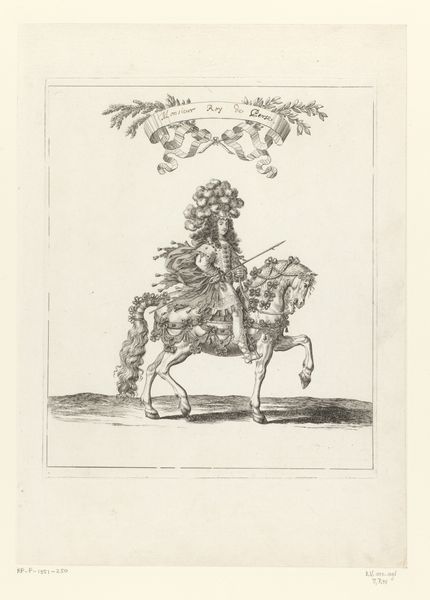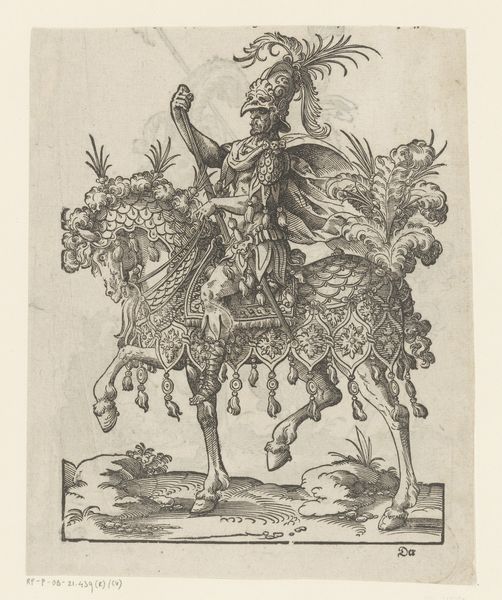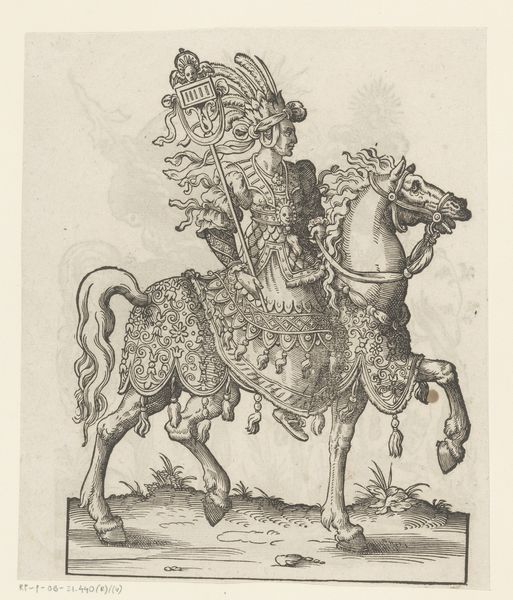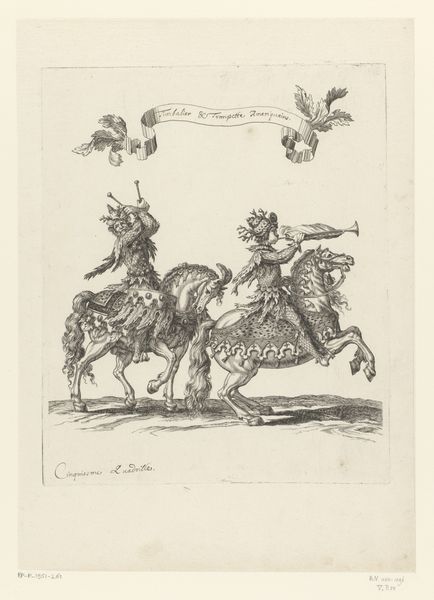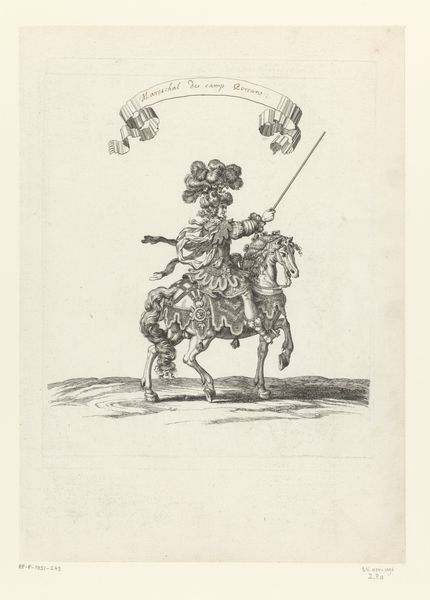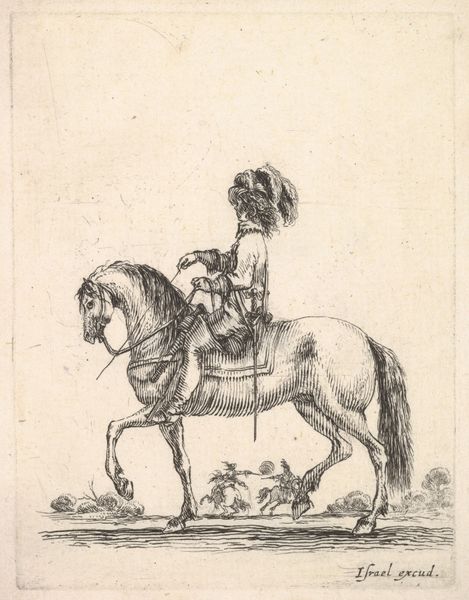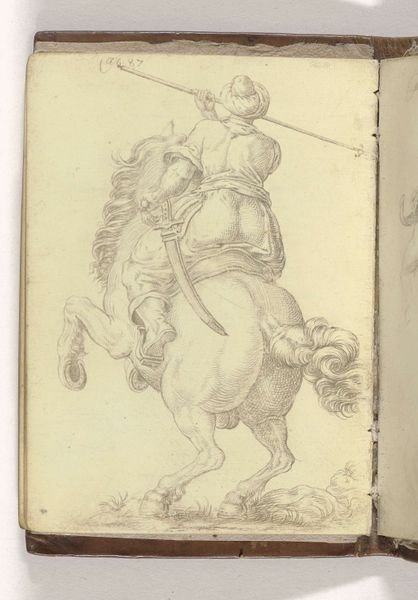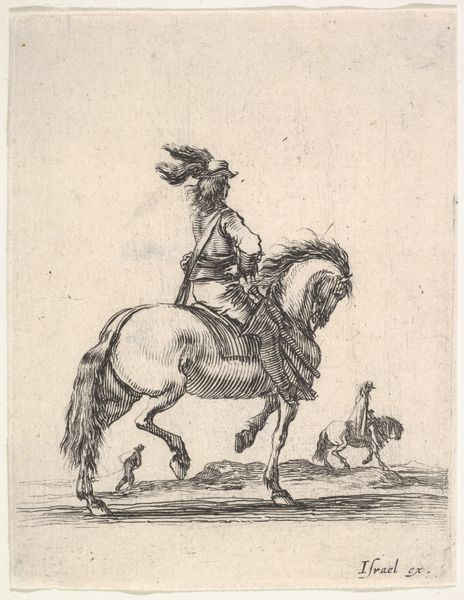
Americanorum Rex, Guisius, from "Courses de Testes et de Bagues Faittes par Roy et par les Princes et Signeurs de sa Cour, en l'annee 1662" (Grand Carrousel) 1662 - 1670
0:00
0:00
drawing, print, engraving
#
drawing
#
allegory
#
baroque
# print
#
history-painting
#
engraving
Dimensions: Plate: 12 1/2 × 10 7/16 in. (31.8 × 26.5 cm) Sheet: 14 3/16 × 11 7/8 in. (36.1 × 30.2 cm)
Copyright: Public Domain
Curator: This engraving, dating back to 1662-1670, is entitled "Americanorum Rex, Guisius," part of a series by François Chauveau capturing the "Courses de Testes et de Bagues Faittes par Roy" – or, in modern English, scenes from a grand carrousel. What are your initial impressions? Editor: Overwhelming! My immediate reaction is of dense texture and intricate layering. The rider, adorned with ornate armor, is practically swallowed by the sheer visual density of the composition. It verges on oppressive in its complexity. Curator: The detail is certainly remarkable, typical of Baroque printmaking. Note the line work—it is exceptionally fine, enabling Chauveau to achieve striking gradations of tone despite the monochrome palette. Consider also how he uses contrasting textures to differentiate fabric from metal. Editor: Beyond the technical skill, I see a symbolic weight assigned to every object. The unicorn, for instance, carries so much historical and mythical significance – purity, grace, even associations with Christ. Its presence elevates the rider beyond a mere mortal. Curator: Precisely! The iconography is rich and intentionally layered. The "Americanorum Rex" suggests a New World ruler, exotic and powerful, presented here through allegory and symbolic representation. Look at the festoons above the rider; observe the use of the heraldic banners. They all signal rank, power, and lineage. Editor: The question becomes, what is the meaning in associating this ruler with the Americas? It feels like an idealized representation of colonial power, perhaps blind to the realities of colonization, using established European symbols to justify a specific agenda. Curator: A valid point. These courtly spectacles often served as propaganda, carefully constructing narratives of authority. The deliberate composition, balanced use of light, and rhythmic placement of forms create a cohesive image…albeit one that could be interpreted through varying cultural lenses. Editor: Ultimately, it reveals the persuasive capacity of symbols, showcasing how cultures adopt and adapt them. What initially feels like decorative excess resolves into something politically and culturally charged. Curator: Indeed. Examining Chauveau's print is to unlock a complex interplay between spectacle, representation, and historical context, demanding closer attention to not just the elements that create it but also their resonance. Editor: Agreed, it has offered new avenues of contemplation. The symbolic resonance and structure make for a study in both artifice and calculated messaging.
Comments
No comments
Be the first to comment and join the conversation on the ultimate creative platform.
